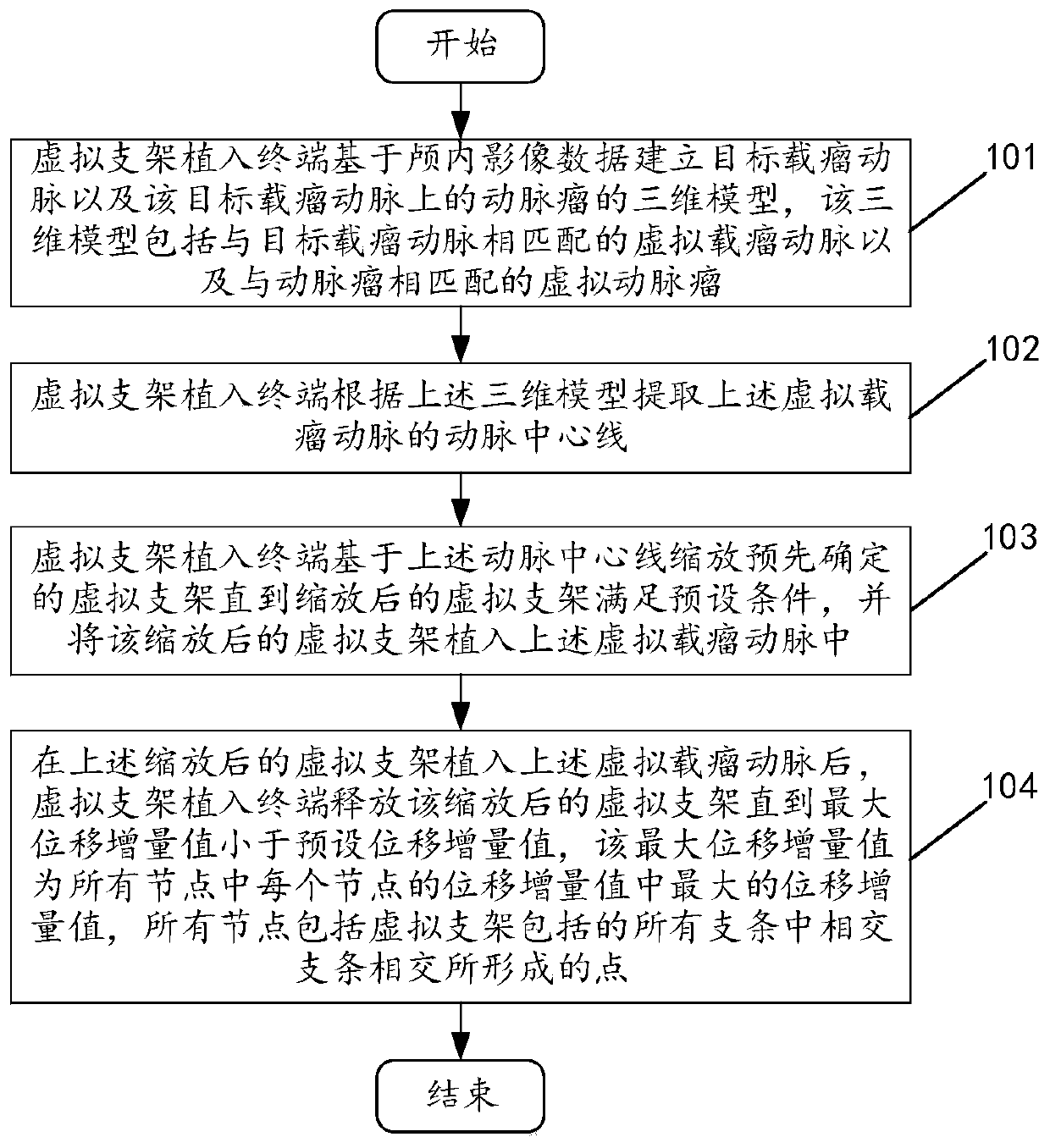Method and device for implanting virtual stent for intracranial aneurysm
A technology for intracranial aneurysm and aneurysm, applied in mechanical/radiation/invasive therapy, medical science, computer-aided planning/modeling, etc., can solve the problems of long time-consuming simulation calculation, difficult application, low risk, etc.
- Summary
- Abstract
- Description
- Claims
- Application Information
AI Technical Summary
Problems solved by technology
Method used
Image
Examples
Embodiment 1
[0090] See figure 1 , figure 1 It is a schematic flowchart of a method for implanting a virtual stent for an intracranial aneurysm disclosed in an embodiment of the present invention. among them, figure 1 The described method can be applied to a virtual stent implantation terminal, and the virtual stent implantation terminal includes all terminals that can simulate the implantation of the virtual stent. Further, the virtual stent implantation terminal can also be wirelessly connected to a user terminal, where the user terminal can include smart phones (Android phones, iOS phones, etc.), smart phone watches, tablet computers, handheld computers, car computers, desktop computers , Netbooks, personal digital assistants (Personal Digital Assistant, PDA), smart navigators, and mobile Internet devices (Mobile Internet Devices, MID) terminals, which are not limited in the embodiment of the present invention. Such as figure 1 As shown, the implantation method of the intracranial aneury...
Embodiment 2
[0134] See Figure 7 , Figure 7 It is a schematic flowchart of another method for implanting a virtual stent for an intracranial aneurysm disclosed in an embodiment of the present invention. among them, Figure 7 The described method can be applied to a virtual stent implantation terminal, and the virtual stent implantation terminal includes all terminals that can simulate the implantation of the virtual stent. Further, the virtual stent implanted terminal can also be wirelessly connected to a user terminal, where the user terminal can include smart phones (Android phones, iOS phones, etc.), smart phone watches, tablet computers, handheld computers, car computers, desktop computers , Netbooks, personal digital assistants (Personal Digital Assistant, PDA), smart navigators, and mobile Internet devices (Mobile Internet Devices, MID) terminals, which are not limited in the embodiment of the present invention. Such as Figure 7 As shown, the implantation method of the intracranial...
Embodiment 3
[0163] See Picture 9 , Picture 9 It is a schematic structural diagram of a device for implanting a virtual stent for an intracranial aneurysm disclosed in an embodiment of the present invention. Such as Picture 9 As shown, the implantation device of the intracranial aneurysm virtual stent may include a creation module 301, an extraction module 302, a zoom module 303, an implant module 304, and a release module 305, wherein:
[0164] The establishment module 301 is used to establish a target tumor-bearing artery and a three-dimensional model of the aneurysm on the target tumor-bearing artery based on intracranial imaging data. The three-dimensional model includes a virtual tumor-bearing artery matching the target tumor-bearing artery and an aneurysm Matching virtual aneurysm.
[0165] The extraction module 302 is configured to extract the arterial centerline of the virtual tumor-bearing artery according to the three-dimensional model established by the establishment module 301.
...
PUM
| Property | Measurement | Unit |
|---|---|---|
| Radius value | aaaaa | aaaaa |
Abstract
Description
Claims
Application Information
 Login to View More
Login to View More - R&D
- Intellectual Property
- Life Sciences
- Materials
- Tech Scout
- Unparalleled Data Quality
- Higher Quality Content
- 60% Fewer Hallucinations
Browse by: Latest US Patents, China's latest patents, Technical Efficacy Thesaurus, Application Domain, Technology Topic, Popular Technical Reports.
© 2025 PatSnap. All rights reserved.Legal|Privacy policy|Modern Slavery Act Transparency Statement|Sitemap|About US| Contact US: help@patsnap.com



